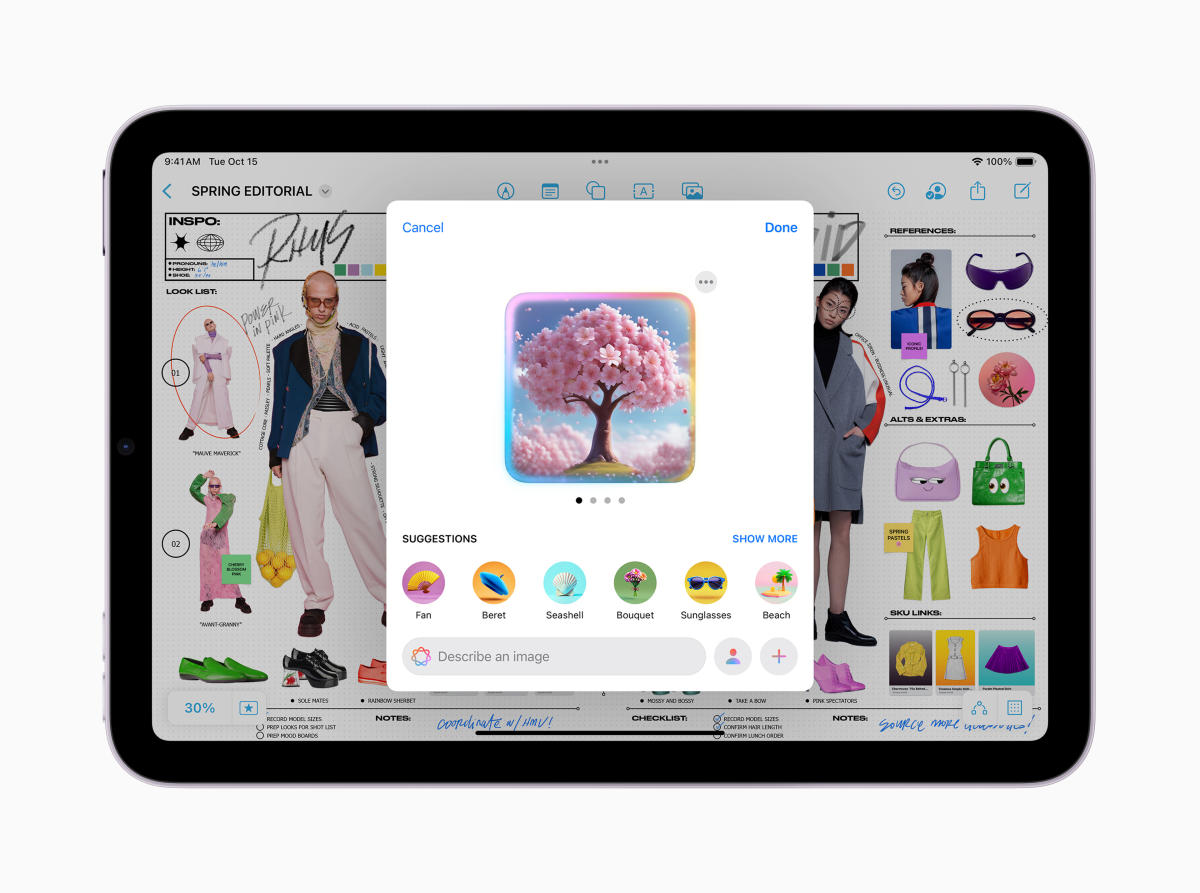In early 2004, the world was shaking it like a Polaroid picture, flocking to theaters to see what was going to happen with all those hobbits, and wondering if that Tom Brady guy was something special. Meanwhile, a few folks around the world were inventing the web as we know it now: a world-shaking social network was brewing in a Harvard dorm room. A Google employee was dreaming up the future of email in their spare time. The coolest cellphone of all time was just about to drop. The internet was still a niche activity, but that was about to change — and fast.
Technology
Xiaomi 15 Ultra launch timeframe tipped, 200MP camera detailed

The Xiaomi 15 Ultra launch timeframe has just been tipped, and the phone’s 200MP camera detailed. This information comes from Digital Chat Station, one of the best-known tipsters out there.
The Xiaomi 15 Ultra launch timeframe has appeared, along with 200MP camera details
Let’s start with the launch timeframe, shall we? While responding to a user question, he said that the Xiaomi 15 Ultra is coming “after the New Year”, meaning the Chinese New Year, of course. That means after January 25.
He did not say when exactly, but this kind of points to the first quarter of the year, probably February. That makes all the sense in the world as the Xiaomi 14 Ultra also arrived in February, so… it fits.
The tipster also detailed the 200-megapixel periscope telephoto camera that will be included on the Xiaomi 15 Ultra. That camera will come with a 100mm lens, and allow for 4.3x optical zoom. We’re looking at an f/2.6 aperture here.
In addition to that periscope telephoto camera, the device will also include a 50-megapixel telephoto camera. That camera will offer a 3x optical zoom. It will be the same as on the Xiaomi 15 and Xiaomi 15 Pro.
The Xiaomi 15 and Xiaomi 15 Pro are coming later this month
While the Xiaomi 15 Ultra is coming next year, its siblings, the Xiaomi 15 and Xiaomi 15 Pro will launch later this month. All three of those phones are expected to use Qualcomm’s new flagship chip. That processor will be announced soon, and it will be called either the Snapdragon 8 Gen 4 or Snapdragon 8 Elite.
Based on the renders that we’ve seen recently, and the real-life image of the Xiaomi 15 Pro, Xiaomi will tweak the design a bit, but not much. It’s sticking with its design language from the Xiaomi 14 series.
Both of those smartphones will be quite powerful, though the ‘Ultra’ will trump them in the camera department. It will be a more versatile shooter, even though the ‘Pro’ model is getting a periscope telephoto camera too.
Technology
New variant of TrickMo malware targets Android PINs, poses serious threat

A new variant of the TrickMo malware has been identified, posing a greater threat to Android users. The malware, designed to steal device unlock codes like PINs and patterns, has raised alarm among cybersecurity experts. This revelation, first disclosed on September 10 by Cleafy and further analyzed by Zimperium, highlights the evolving capabilities of TrickMo, making it a serious concern for Android users worldwide.
TrickMo malware’s new Focus on Android PINs
TrickMo, originally known as a banking Trojan, has evolved to target Android users more aggressively. This new variant employs advanced techniques to capture users’ unlock patterns and PINs. The malware tricks users into entering their credentials by displaying a deceptive user interface that mimics the device’s legitimate unlock screen. These details are then sent to the attacker’s server, linking the stolen information directly to the victim’s device.
Zimperium’s analysis found that the malware hosts this fake UI as an external HTML page. When users enter their unlock details, the malware immediately sends this data, along with a unique identifier, to the attacker. This feature lets attackers control the device even when it is locked.
Zimperium researchers identified over 40 variants of the TrickMo malware during their investigation. These variants have similar functionalities, such as OTP interception, screen recording, data exfiltration, and remote control. However, the addition of unlock code theft takes the threat to a new level. This capability enables attackers to access sensitive information, potentially leading to significant financial losses for users.
The malware mainly targets Android devices in Canada, the United Arab Emirates, Turkey, and Germany. Zimperium’s research shows that the malware has compromised thousands of devices in these regions. It has stolen millions of records. Data theft goes beyond financial information. It also includes credentials for accessing corporate resources. This increases the risk for both individuals and organizations.
Steps to mitigate the TrickMo malware threat
To protect against TrickMo malware and its ability to steal Android PINs, users must take a few actions. First, regularly update your device’s operating system and apps. These updates often patch security vulnerabilities that could be exploited by malware like TrickMo.
It’s also essential to avoid downloading apps from untrusted sources. Unverified apps can carry hidden malware, putting your device and personal information at risk. Similarly, be cautious about clicking suspicious links that might lead to harmful downloads.
Lastly, using advanced security solutions that offer real-time threat detection and response is crucial. These tools can detect and block malware like TrickMo before it compromises your device.
Technology
The iPad mini 7 goes big on Apple Intelligence

Meet Apple’s seventh-generation iPad mini. Arriving over three years after its predecessor, the new tablet adds a faster A17 Pro chip originally found in the iPhone 15 Pro series with support for Apple Intelligence, more entry-level storage and support for the Apple Pencil Pro.
The iPad mini 7 has the same 8.3-inch screen size as the previous model and an identical 2266 x 1488 resolution at 326 ppi. Unfortunately, the refresh rate remains a modest 60Hz; from what we can tell, the display is identical to the one in its predecessor. It’s dimensions remain unchanged as well. The front-facing camera is still in the portrait position, something that makes sense for a device of this size, and both the front- and back-facing cameras appear unchanged from the previous iPad mini.
Without any significant design upgrades, this update is more about what’s inside. The A17 Pro chip lets the new tablet use Apple Intelligence features like smarter Siri, Writing Tools, Image Playground and Genmoji. It also has more RAM and 128GB of storage in the base-level model, double that of the 2021 model. There’s also a 512GB storage option for the first time.
The new iPad mini arrives on October 23 and starts at $499 for 128GB storage.
Update, October 15 2024, 9:40AM ET: This post originally said that the new iPad mini used the A18 chip; it has been updated to note that it uses the A17 Pro chip. We apologize for the error.
Technology
Strella raises $4 million to automate market research with AI-powered customer interviews

Join our daily and weekly newsletters for the latest updates and exclusive content on industry-leading AI coverage. Learn More
Strella, a startup using artificial intelligence to automate and accelerate customer research, announced today that it has raised $4 million in seed funding led by Decibel, with participation from Unusual Ventures. The company’s AI-powered platform aims to deliver human insights up to 10 times faster and at half the cost of traditional research methods.
Founded by Lydia Hylton and Priya Krishnan, Strella is tackling a long-standing challenge in market research: the trade-off between speed and depth of customer insights. The company’s AI moderator can conduct interviews, analyze responses, and synthesize findings in real-time, dramatically condensing timelines for gathering qualitative feedback.

AI interviews: The future of scalable qualitative research
“Traditionally, if you wanted any scale in a customer research project, you had to run surveys. It’s way too painful to do human-led interviews if you want to have 30, 40, 50 interviews on a topic,” said Lydia Hylton, Co-Founder and CEO of Strella, in an interview with VentureBeat. “We’re now able to get the richness of qualitative feedback that you get from a conversation, but at the scale of a survey and at the speed of a survey.”
The platform is designed to work alongside human researchers, allowing companies to blend AI-moderated and human-led interviews within the same system. This flexibility addresses concerns about losing the human touch in customer interactions.
“We’ve designed our platform to be conducive to human-centered research as well,” explained Priya Krishnan, Co-Founder of Strella. “Let’s say you want to run a research project and you want to interview 10 of your customers, we give you the flexibility to choose to use the AI moderator as much or as little as you want.”

Enhancing customer feedback: Strella’s approach
Strella’s method could significantly alter how companies gather customer feedback and inform product decisions. By lowering the time and cost barriers to qualitative research, the platform may enable more frequent and comprehensive customer engagement across various industries.
The company reports it has already signed on 15 customers, including notable names like Duolingo and Spanx. This early traction in both the tech and consumer goods sectors suggests broad applicability for Strella’s technology.
Jessica Leao, partner at Decibel, highlighted the potential impact of Strella’s technology: “You get to transform this entire world of quantitative research into qualitative research, because you’re no longer blocked on time. You’re no longer blocked on scheduling.”
However, Strella enters a competitive field. Established players like Qualtrics dominate in quantitative research, while numerous startups are leveraging AI for various aspects of market research. Strella’s differentiation lies in its end-to-end automation of the qualitative research process, from interview moderation to insight synthesis.
The AI-driven future of market research: Opportunities and challenges
The funding round comes at a time of growing interest in AI applications for business intelligence. As companies seek to become more data-driven and customer-centric, tools that can rapidly deliver actionable insights are increasingly valuable.
Looking ahead, Strella aims to expand its reach across industries and company sizes. “We really want customer research to be accessible for teams of all sizes, across industries,” Krishnan said. “Up until now, research has really only been something that medium to larger companies have had the resources to do.”
As Strella emerges from stealth mode with this funding announcement, it faces a twofold challenge: proving its AI can consistently deliver high-quality insights across diverse research scenarios, and convincing businesses to shift away from established research methodologies. The company’s success hinges not just on technological prowess, but on its ability to change deeply ingrained corporate habits around customer feedback.
If Strella can overcome these hurdles, it may usher in a new era where AI-driven qualitative research becomes as commonplace as surveys are today. In a business world increasingly driven by data, Strella’s approach could be the difference between companies that truly understand their customers and those that are left guessing.
Source link
Technology
Amplitude buys Command AI to bolster its app engagement offerings

Amplitude, a publicly-traded company that makes digital analytics software, has acquired Command AI, an app user engagement startup formerly known as CommandBar.
Most of Command AI’s 30-person, San Francisco-based team will be joining Amplitude. Command AI’s co-founder and CEO James Evans wouldn’t reveal the terms of the deal, but said candidly that an acquisition wasn’t something he’d been planning on.
“Our growth was great and we had plenty of runway,” Evans told TechCrunch. “We weren’t out shopping ourselves or anything. But when Amplitude reached out a little while ago — this summer — we got really excited about the combination and became convinced that we could grow faster and reach more users together.”
Evans started Command AI in 2021 as a way for developers to easily integrate search functionality into their web apps. Together with co-founders Richard Freling and Vinay Ayyala, he built Command AI’s first product: an in-app search bar that provided personalized results, shortcuts, and the ability to highlight new app enhancements.
Over the years, Command AI’s product portfolio expanded to include a chatbot and AI Co-Browsing, which walks a user through in-app features by effectively taking control of their mouse. A more recent tool in development, Nudge Autopilot, shows “nudges” (e.g., reminders to try out certain app features) to users automatically based on metrics.
Twenty-five million end-users interact with Command AI’s products on a regular basis through apps built by clients like Hashicorp, Gusto, Yotpo and LaunchDarkly, Evans said. Before the Amplitude buyout, Command AI managed to raise $23.8 million from backers including Insight Partners, Itai Tsiddon and Thrive Capital.

So how does Command AI’s technology fit into Amplitude’s product roadmap? Amplitude CEO and co-founder Spenser Skates says the startup will enable Amplitude to offer “personalized user assistance” via in-product tours, onboarding experiences, and more.
Specifically, early next year, Command AI will launch checklists and guides for Amplitude, which will let customers create app and website action plans as well as interactive product tours. Announcements, another Command AI-powered capability heading to Amplitude, will allow customers to set up “smart triggers” in apps for things like updates and special offers.
Evans sees the integrations as a natural evolution for Command AI, which has offered connectors to Amplitude for some time.
“There’s a really tight loop between tools that help you understand user behavior — Amplitude — and tools that help you influence user behavior — us,” he said. “Imagine you identify a user segment that seems to not be digging your product. Well, naturally, you then might want to ask those users a question with a survey, or try to steer them to some feature they might care about, and then aggregate that feedback or see the impact of that change. We’ve always solved that connection with integration, but being on the same team is going to allow us to build a much tighter feedback loop.”
Evans will become director of product at Amplitude once the deal closes, while Ayyala will become engineering director. They’ll both oversee Amplitude’s new Command AI product org, which will continue to serve current Command AI customers through the end of the year.
Command AI is Amplitude’s third acquisition since its founding a decade ago. In 2020, Amplitude bought ClearBrain, a predictive analytics company, and in 2021, it purchased data pipeline firm Iteratively.
Amplitude claims to have more than 2,700 paying customers, including 26 of the Fortune 100.
Technology
Welcome to 2004 Week – The Verge

In so many ways, the digital world in which we now all live was created 20 years ago. Google went public and began to ascend to rule the web. Facebook, Gmail, Firefox, Flickr, and Digg all launched — the year Web 2.0 became the web. “Blog” and “the long tail” were on no one’s radar before 2004, and since then, they’ve been everywhere. The United States went through a contentious election, a bunch of sequels dominated the box office, and Apple launched a new product that looked very cool but was ultimately eclipsed by a better product a year later. Okay, some things never change.
Every year is a big year in tech, of course, but 2004 was an especially big one. And The Verge didn’t exist yet! So, this week, we’ll have stories on the best and most important gadgets and platforms that launched that year and pieces about the cultural events that still affect the way we live now. Basically, we’re going to blog like it’s 2004.
Our first few stories are up today, covering everything from the first robo-car race to the Motorola Razr to the mystery of all our missing 2004 photos. There’s also a special episode of The Vergecast all about the history and future of podcasts, an interview with Kevin Rose about Digg’s legacy, and a shockingly hard quiz asking one simple question: did it happen in 2004 or 2024?
We’ll be publishing more 2004 stories and videos all week, and we want to hear all your 2004 memories, too! Share your favorite pictures from that year, your favorite 20-year-old gadgets that you wish still worked (or shockingly still do), and anything else you remember from that seminal year in our recent past. We’ll be doing the same. It’s going to be more fun than Shrek 2.
Technology
Researchers develop new tool for spotting Android malware


Security researchers have devised a new tool to help Android users spot and remove malware from their devices.
It is called Detector of Victim-specific Accessibility (DVa), and it was built by cybersecurity experts at Georgia Tech. It runs on the cloud, checks the phone for malware that abuses accessibility permissions, and then reports back to the user.
If the tool finds any positives, the user can then uninstall the app or otherwise clean up their device.
GPUs making attacks potent
“As we continue to design systems that are more and more accessible, we also need security experts in the room,” said Brendan Saltaformaggio, an associate professor in the School of Cybersecurity and Privacy (SCP) and the School of Electrical and Computer Engineering. “Because if we don’t, they’re going to get abused by hackers.”
Besides reporting back to the user, DVa also sends a report directly to Google. While certainly commendable, it is also worth mentioning that Google is doing a solid job keeping its app repository clean, as it is. The majority of Android-based malware is usually downloaded from third-party app stores, shady websites, or through social media advertising.
Most of the time, Android malware can be identified by the permissions it asks for. Usually, this type of malware will ask for Accessibility permissions, which are primarily built to simplify use for people with different disabilities. Accessibility permissions are designed for apps that can read the contents on the screen, turn it to audio, and similar.
However, malicious apps with the same permissions can tap on things, which can lead to data loss and even wire fraud.
“The Android accessibility service is widely abused by malware to conduct on-device monetization fraud,” the researchers explained in the whitepaper. “Existing mitigation techniques focus on malware detection but overlook providing users evidence of abuses that have already occurred and notifying victims to facilitate defenses. We developed DVa, a malware analysis pipeline based on dynamic victim-guided execution and abuse-vector-guided symbolic analysis, to help investigators uncover malware’s targeted victims, victim-specific abuse vectors, and persistence mechanisms.”
After deploying DVa on Android devices infected with almost 10,000 malware, the researchers uncovered 215 unique victim vectors and an average of 13.9 abuse routines. The full research can be found here.
More from TechRadar Pro
-

 Science & Environment4 weeks ago
Science & Environment4 weeks agoHyperelastic gel is one of the stretchiest materials known to science
-

 Technology4 weeks ago
Technology4 weeks agoWould-be reality TV contestants ‘not looking real’
-

 Science & Environment4 weeks ago
Science & Environment4 weeks agoHow to unsnarl a tangle of threads, according to physics
-

 Science & Environment4 weeks ago
Science & Environment4 weeks agoMaxwell’s demon charges quantum batteries inside of a quantum computer
-

 Science & Environment4 weeks ago
Science & Environment4 weeks ago‘Running of the bulls’ festival crowds move like charged particles
-

 Science & Environment4 weeks ago
Science & Environment4 weeks agoLiquid crystals could improve quantum communication devices
-

 Technology3 weeks ago
Technology3 weeks agoIs sharing your smartphone PIN part of a healthy relationship?
-

 Womens Workouts3 weeks ago
Womens Workouts3 weeks ago3 Day Full Body Women’s Dumbbell Only Workout
-

 Science & Environment4 weeks ago
Science & Environment4 weeks agoQuantum ‘supersolid’ matter stirred using magnets
-

 Science & Environment3 weeks ago
Science & Environment3 weeks agoX-rays reveal half-billion-year-old insect ancestor
-

 Science & Environment4 weeks ago
Science & Environment4 weeks agoWhy this is a golden age for life to thrive across the universe
-

 Science & Environment4 weeks ago
Science & Environment4 weeks agoSunlight-trapping device can generate temperatures over 1000°C
-

 Science & Environment4 weeks ago
Science & Environment4 weeks agoNerve fibres in the brain could generate quantum entanglement
-

 Science & Environment4 weeks ago
Science & Environment4 weeks agoQuantum forces used to automatically assemble tiny device
-

 Science & Environment4 weeks ago
Science & Environment4 weeks agoITER: Is the world’s biggest fusion experiment dead after new delay to 2035?
-

 Science & Environment4 weeks ago
Science & Environment4 weeks agoHow to wrap your mind around the real multiverse
-

 Science & Environment4 weeks ago
Science & Environment4 weeks agoA slight curve helps rocks make the biggest splash
-
News4 weeks ago
the pick of new debut fiction
-

 Science & Environment4 weeks ago
Science & Environment4 weeks agoLaser helps turn an electron into a coil of mass and charge
-

 News3 weeks ago
News3 weeks agoOur millionaire neighbour blocks us from using public footpath & screams at us in street.. it’s like living in a WARZONE – WordupNews
-

 Science & Environment4 weeks ago
Science & Environment4 weeks agoTime travel sci-fi novel is a rip-roaringly good thought experiment
-

 Science & Environment4 weeks ago
Science & Environment4 weeks agoPhysicists are grappling with their own reproducibility crisis
-

 Science & Environment4 weeks ago
Science & Environment4 weeks agoNuclear fusion experiment overcomes two key operating hurdles
-

 News4 weeks ago
News4 weeks ago▶️ Hamas in the West Bank: Rising Support and Deadly Attacks You Might Not Know About
-

 News4 weeks ago
News4 weeks agoYou’re a Hypocrite, And So Am I
-
Business2 weeks ago
Eurosceptic Andrej Babiš eyes return to power in Czech Republic
-

 Sport4 weeks ago
Sport4 weeks agoJoshua vs Dubois: Chris Eubank Jr says ‘AJ’ could beat Tyson Fury and any other heavyweight in the world
-

 Science & Environment4 weeks ago
Science & Environment4 weeks agoA new kind of experiment at the Large Hadron Collider could unravel quantum reality
-

 News4 weeks ago
News4 weeks ago▶️ Media Bias: How They Spin Attack on Hezbollah and Ignore the Reality
-

 Science & Environment4 weeks ago
Science & Environment4 weeks agoCaroline Ellison aims to duck prison sentence for role in FTX collapse
-

 News4 weeks ago
News4 weeks agoNew investigation ordered into ‘doorstep murder’ of Alistair Wilson
-

 Technology3 weeks ago
Technology3 weeks agoWhy Machines Learn: A clever primer makes sense of what makes AI possible
-

 Technology2 weeks ago
Technology2 weeks agoQuantum computers may work better when they ignore causality
-
Business2 weeks ago
Should London’s tax exiles head for Spain, Italy . . . or Wales?
-

 Football2 weeks ago
Football2 weeks agoFootball Focus: Martin Keown on Liverpool’s Alisson Becker
-

 Sport2 weeks ago
Sport2 weeks agoWatch UFC star deliver ‘one of the most brutal knockouts ever’ that left opponent laid spark out on the canvas
-

 Science & Environment4 weeks ago
Science & Environment4 weeks agoRethinking space and time could let us do away with dark matter
-

 Science & Environment4 weeks ago
Science & Environment4 weeks agoA tale of two mysteries: ghostly neutrinos and the proton decay puzzle
-
News4 weeks ago
The Project Censored Newsletter – May 2024
-

 Technology2 weeks ago
Technology2 weeks ago‘From a toaster to a server’: UK startup promises 5x ‘speed up without changing a line of code’ as it plans to take on Nvidia, AMD in the generative AI battlefield
-

 MMA2 weeks ago
MMA2 weeks agoConor McGregor challenges ‘woeful’ Belal Muhammad, tells Ilia Topuria it’s ‘on sight’
-

 Technology2 weeks ago
Technology2 weeks agoMicrophone made of atom-thick graphene could be used in smartphones
-

 News4 weeks ago
News4 weeks agoIsrael strikes Lebanese targets as Hizbollah chief warns of ‘red lines’ crossed
-

 Health & fitness4 weeks ago
Health & fitness4 weeks agoThe secret to a six pack – and how to keep your washboard abs in 2022
-

 Science & Environment4 weeks ago
Science & Environment4 weeks agoFuture of fusion: How the UK’s JET reactor paved the way for ITER
-

 Technology4 weeks ago
Technology4 weeks agoThe ‘superfood’ taking over fields in northern India
-

 Science & Environment4 weeks ago
Science & Environment4 weeks agoUK spurns European invitation to join ITER nuclear fusion project
-

 CryptoCurrency4 weeks ago
CryptoCurrency4 weeks agoCardano founder to meet Argentina president Javier Milei
-

 News3 weeks ago
News3 weeks agoWhy Is Everyone Excited About These Smart Insoles?
-

 Technology3 weeks ago
Technology3 weeks agoRobo-tuna reveals how foldable fins help the speedy fish manoeuvre
-

 Technology3 weeks ago
Technology3 weeks agoGet ready for Meta Connect
-

 Technology2 weeks ago
Technology2 weeks agoUniversity examiners fail to spot ChatGPT answers in real-world test
-
Business2 weeks ago
Ukraine faces its darkest hour
-
Politics3 weeks ago
Robert Jenrick vows to cut aid to countries that do not take back refused asylum seekers | Robert Jenrick
-

 Science & Environment4 weeks ago
Science & Environment4 weeks agoPhysicists have worked out how to melt any material
-

 Sport4 weeks ago
Sport4 weeks agoUFC Edmonton fight card revealed, including Brandon Moreno vs. Amir Albazi headliner
-

 Science & Environment4 weeks ago
Science & Environment4 weeks agoWhy we need to invoke philosophy to judge bizarre concepts in science
-
Politics4 weeks ago
UK consumer confidence falls sharply amid fears of ‘painful’ budget | Economics
-

 TV3 weeks ago
TV3 weeks agoCNN TÜRK – 🔴 Canlı Yayın ᴴᴰ – Canlı TV izle
-

 Science & Environment3 weeks ago
Science & Environment3 weeks agoMeet the world's first female male model | 7.30
-

 Womens Workouts3 weeks ago
Womens Workouts3 weeks ago3 Day Full Body Toning Workout for Women
-

 Health & fitness2 weeks ago
Health & fitness2 weeks agoThe 7 lifestyle habits you can stop now for a slimmer face by next week
-

 Politics4 weeks ago
Politics4 weeks agoTrump says he will meet with Indian Prime Minister Narendra Modi next week
-

 CryptoCurrency4 weeks ago
CryptoCurrency4 weeks agoEthereum is a 'contrarian bet' into 2025, says Bitwise exec
-

 Science & Environment4 weeks ago
Science & Environment4 weeks agoBeing in two places at once could make a quantum battery charge faster
-

 News4 weeks ago
News4 weeks agoHow FedEx CEO Raj Subramaniam Is Adapting to a Post-Pandemic Economy
-

 CryptoCurrency4 weeks ago
CryptoCurrency4 weeks agoDecentraland X account hacked, phishing scam targets MANA airdrop
-

 CryptoCurrency4 weeks ago
CryptoCurrency4 weeks agoBitcoin miners steamrolled after electricity thefts, exchange ‘closure’ scam: Asia Express
-

 CryptoCurrency4 weeks ago
CryptoCurrency4 weeks agoDZ Bank partners with Boerse Stuttgart for crypto trading
-

 CryptoCurrency4 weeks ago
CryptoCurrency4 weeks agoLow users, sex predators kill Korean metaverses, 3AC sues Terra: Asia Express
-

 CryptoCurrency4 weeks ago
CryptoCurrency4 weeks agoBlockdaemon mulls 2026 IPO: Report
-
Business4 weeks ago
Thames Water seeks extension on debt terms to avoid renationalisation
-
Politics4 weeks ago
‘Appalling’ rows over Sue Gray must stop, senior ministers say | Sue Gray
-

 MMA3 weeks ago
MMA3 weeks agoRankings Show: Is Umar Nurmagomedov a lock to become UFC champion?
-

 Womens Workouts3 weeks ago
Womens Workouts3 weeks agoBest Exercises if You Want to Build a Great Physique
-

 Womens Workouts3 weeks ago
Womens Workouts3 weeks agoEverything a Beginner Needs to Know About Squatting
-

 News3 weeks ago
News3 weeks agoFour dead & 18 injured in horror mass shooting with victims ‘caught in crossfire’ as cops hunt multiple gunmen
-

 Servers computers3 weeks ago
Servers computers3 weeks agoWhat are the benefits of Blade servers compared to rack servers?
-

 Business2 weeks ago
Business2 weeks agoWhen to tip and when not to tip
-

 Entertainment1 week ago
Entertainment1 week agoChristopher Ciccone, artist and Madonna’s younger brother, dies at 63
-

 News4 weeks ago
News4 weeks agoChurch same-sex split affecting bishop appointments
-

 News4 weeks ago
News4 weeks agoBrian Tyree Henry on voicing young Megatron, his love for villain roles
-

 Health & fitness4 weeks ago
Health & fitness4 weeks agoThe maps that could hold the secret to curing cancer
-

 Science & Environment4 weeks ago
Science & Environment4 weeks agoTiny magnet could help measure gravity on the quantum scale
-

 CryptoCurrency4 weeks ago
CryptoCurrency4 weeks agoDorsey’s ‘marketplace of algorithms’ could fix social media… so why hasn’t it?
-

 CryptoCurrency4 weeks ago
CryptoCurrency4 weeks agoBitcoin bulls target $64K BTC price hurdle as US stocks eye new record
-

 News4 weeks ago
News4 weeks agoBrian Tyree Henry on voicing young Megatron, his love for villain roles
-

 CryptoCurrency4 weeks ago
CryptoCurrency4 weeks agoCoinbase’s cbBTC surges to third-largest wrapped BTC token in just one week
-

 Travel3 weeks ago
Travel3 weeks agoDelta signs codeshare agreement with SAS
-

 Technology2 weeks ago
Technology2 weeks agoThe best robot vacuum cleaners of 2024
-

 Science & Environment4 weeks ago
Science & Environment4 weeks agoHow one theory ties together everything we know about the universe
-
Business4 weeks ago
JPMorgan in talks to take over Apple credit card from Goldman Sachs
-

 Science & Environment4 weeks ago
Science & Environment4 weeks agoQuantum time travel: The experiment to ‘send a particle into the past’
-
Business4 weeks ago
How Labour donor’s largesse tarnished government’s squeaky clean image
-

 Science & Environment3 weeks ago
Science & Environment3 weeks agoCNN TÜRK – 🔴 Canlı Yayın ᴴᴰ – Canlı TV izle
-

 News3 weeks ago
News3 weeks agoShocking ‘kidnap’ sees man, 87, bundled into car, blindfolded & thrown onto dark road as two arrested
-

 Politics3 weeks ago
Politics3 weeks agoHope, finally? Keir Starmer’s first conference in power – podcast | News
-

 News3 weeks ago
News3 weeks agoUS Newspapers Diluting Democratic Discourse with Political Bias
-
Business2 weeks ago
DoJ accuses Donald Trump of ‘private criminal effort’ to overturn 2020 election
-

 Technology4 weeks ago
Technology4 weeks agoiPhone 15 Pro Max Camera Review: Depth and Reach

You must be logged in to post a comment Login